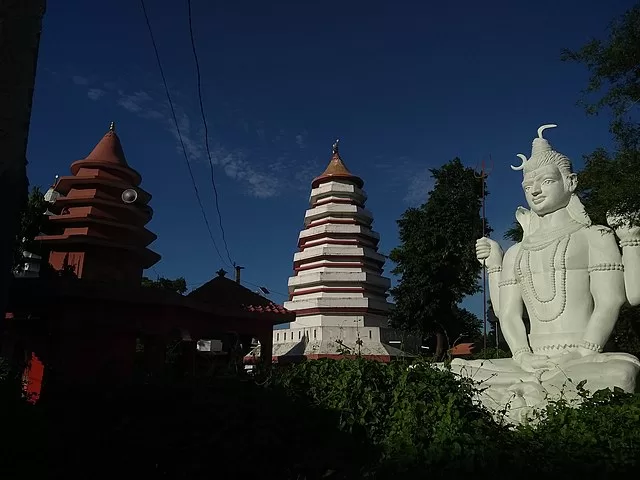Madhubani, also known as Mithila art, is a traditional and ancient form of Indian folk art that originated in the Mithila region of Bihar, India. This art form is renowned for its vibrant colors, intricate patterns, and unique storytelling elements. The rich cultural heritage and historical significance of Madhubani make it an enthralling subject of exploration.
The Origins of Madhubani Art
The history of Madhubani art can be traced back to the times of the Ramayana and has been passed down through generations as a form of storytelling. It is believed that this art form was used to adorn the walls of homes during weddings and religious ceremonies. Initially, it was restricted to women, who learned and practiced it as a way of connecting with their cultural roots.
The Styles of Madhubani Art

Madhubani art can be categorized into five distinctive styles, each representing a different aspect of life and mythology. These styles are:
1 Bharni
The Bharni style is characterized by the use of vibrant colors, filled patterns, and intricate detailing. It often depicts deities, flora, fauna, and scenes from Hindu mythology.
2 Katchni
The Katchni style involves outlining the main figures and using geometrical patterns to fill the artwork. It is known for its simplicity and the emphasis on straight lines and angles.
3 Tantrik
The Tantrik style is shrouded in mystery and often includes complex, tantric symbols and rituals. This style is less prevalent today but holds immense significance in traditional Madhubani art.
4 Godna
The Godna style is characterized by the use of black outlines and a limited color palette, usually consisting of red, black, and white. It was traditionally used to decorate the hands and feet of women with auspicious symbols.
5 Kohbar
The Kohbar style is unique to the Madhubani region and primarily centers around the theme of love and fertility. It is commonly found in the form of decorative art in wedding chambers.
The Technique of Creating Madhubani Art

Madhubani art is traditionally created using natural dyes and pigments made from flowers, plants, and minerals. The artists use their fingers, twigs, brushes, and nib-pens to bring life to their imagination on canvas or paper. The process involves layering colors and creating intricate designs, often depicting mythical stories or religious motifs.
The Evolution of Madhubani Art
Over the years, Madhubani art has evolved from being a wall art form to becoming a global sensation. With the advent of modernization, Madhubani artists have adapted their techniques to cater to a broader audience. Today, this exquisite art form can be found on a wide range of products, including textiles, pottery, and handicrafts, making it a significant source of income for many artisans.
The Global Appeal
Madhubani art’s unique and eye-catching style has garnered international attention and appreciation. Many art enthusiasts and collectors worldwide admire the cultural richness and authenticity that Madhubani art brings to the table. Numerous art exhibitions and workshops are held globally to promote and preserve this traditional art form.
Madhubani Art and Women Empowerment

Historically, Madhubani art was the domain of women in the Mithila region. However, in recent times, many male artists have also embraced this art form. The art’s popularity has provided an avenue for women to earn a livelihood, gain financial independence, and empower themselves.
Conclusion
Madhubani art is not just a form of creative expression but also a window into the rich cultural heritage of Bihar. The intricate designs, vibrant colors, and fascinating stories woven into the artwork make it a visual treat for art enthusiasts worldwide. As we embrace modernity, it becomes essential to preserve and promote such traditional art forms, ensuring that the legacy of Madhubani art lives on for generations to come.
FAQs
1. What is Madhubani famous for?
Madhubani is primarily known for its vibrant and intricate folk art, called Madhubani painting or Mithila art. This traditional style uses natural dyes and pigments to create colorful, detailed patterns often depicting nature, mythology, and everyday life.
2. Where is Madhubani located?
Madhubani is a district in the northern part of Bihar, India. It shares its border with Nepal and is well known for its cultural heritage and artistic traditions.
3. How did Madhubani painting originate?
Madhubani painting originated centuries ago as a ritualistic art form practiced by women in the Mithila region. It was traditionally done on walls and floors during festivals, weddings, and religious occasions before moving onto paper and canvas.
4. What materials are used in traditional Madhubani paintings?
Artists use natural and locally sourced materials like twigs, brushes made from bamboo, handmade paper, and natural dyes extracted from plants, flowers, and minerals to create authentic Madhubani artwork.
5. Can tourists visit Madhubani to learn about the art?
Absolutely! Madhubani has become a popular cultural destination where tourists can experience workshops, visit artists’ studios, and purchase authentic handmade Madhubani paintings directly from local artisans.


